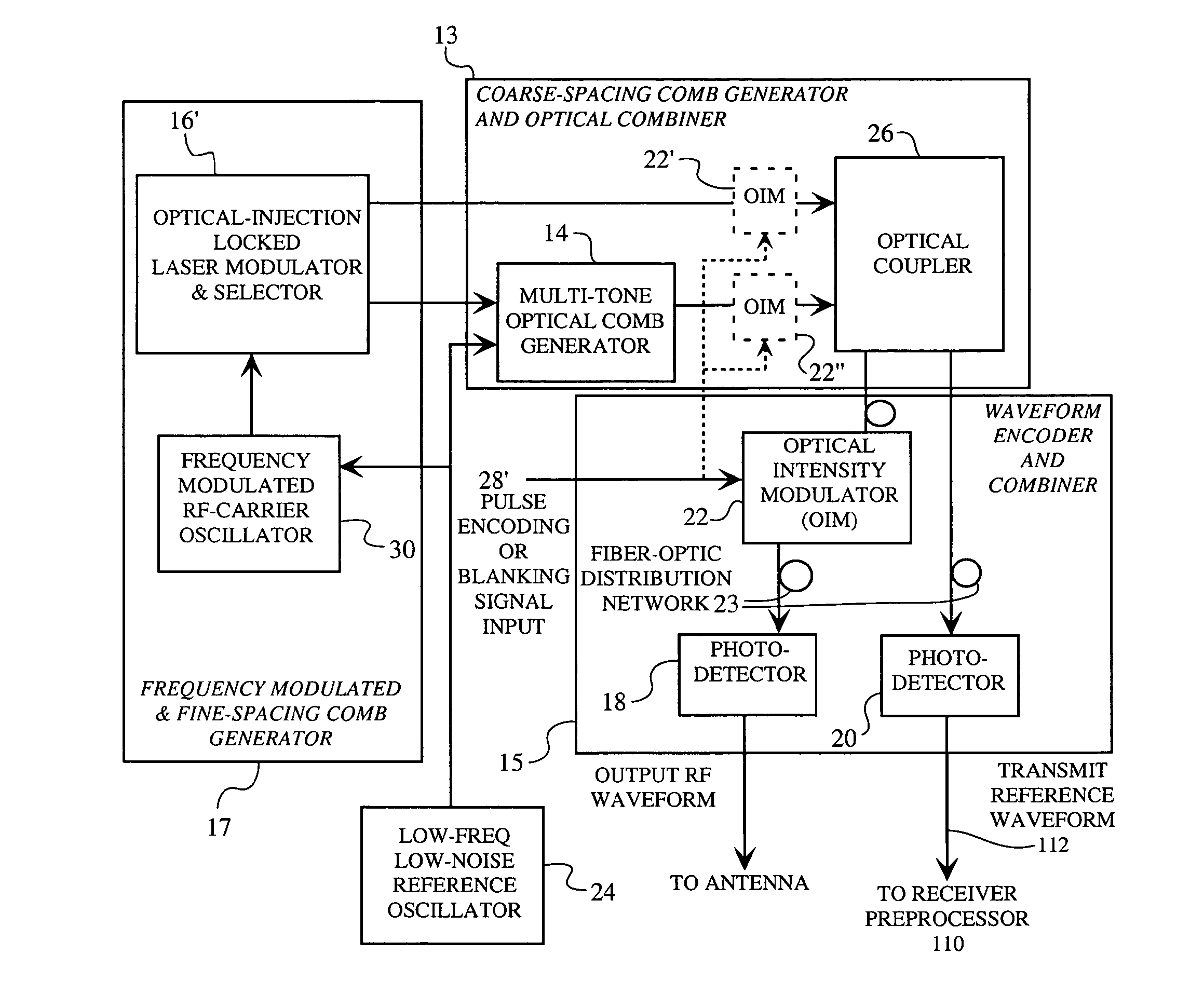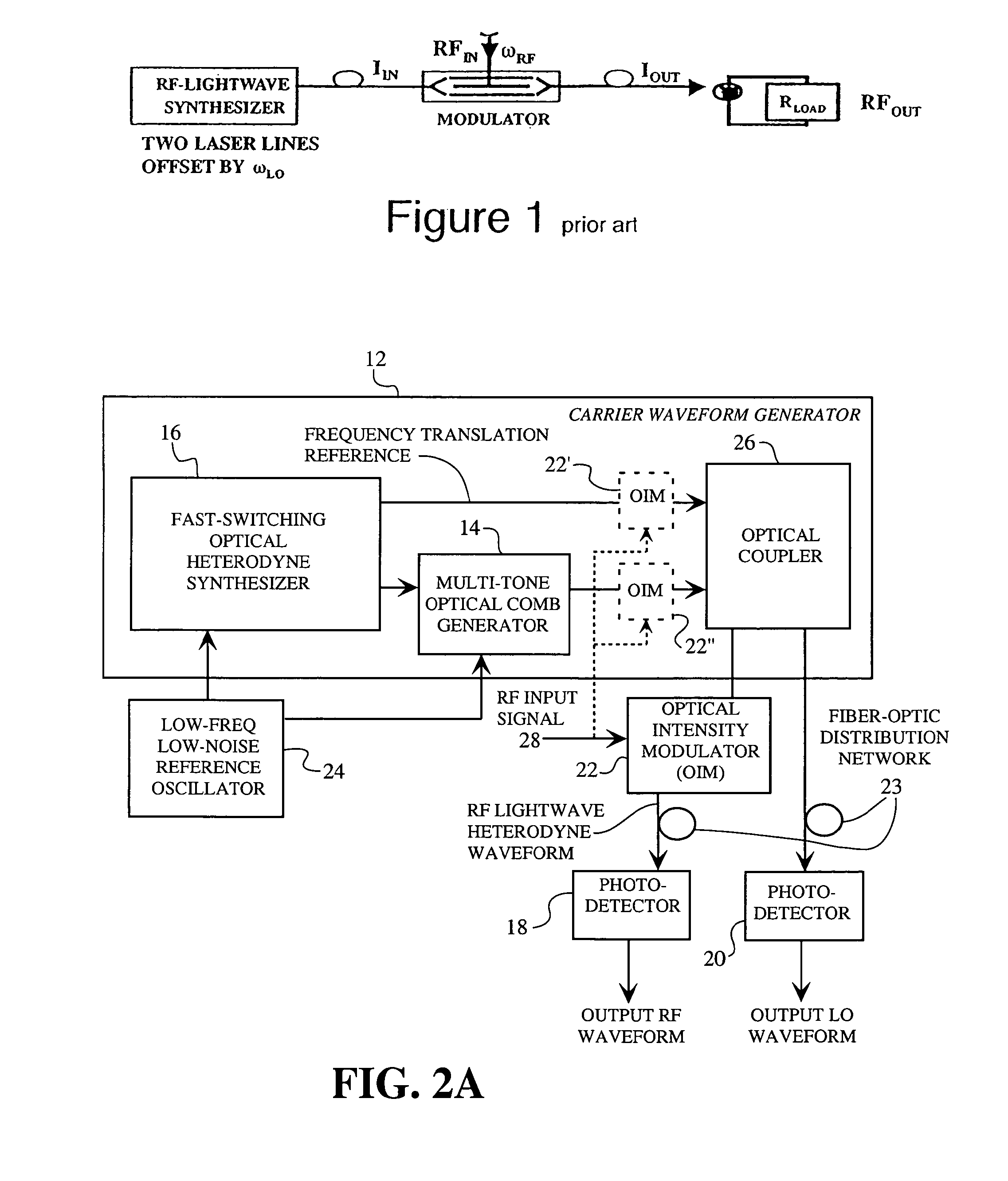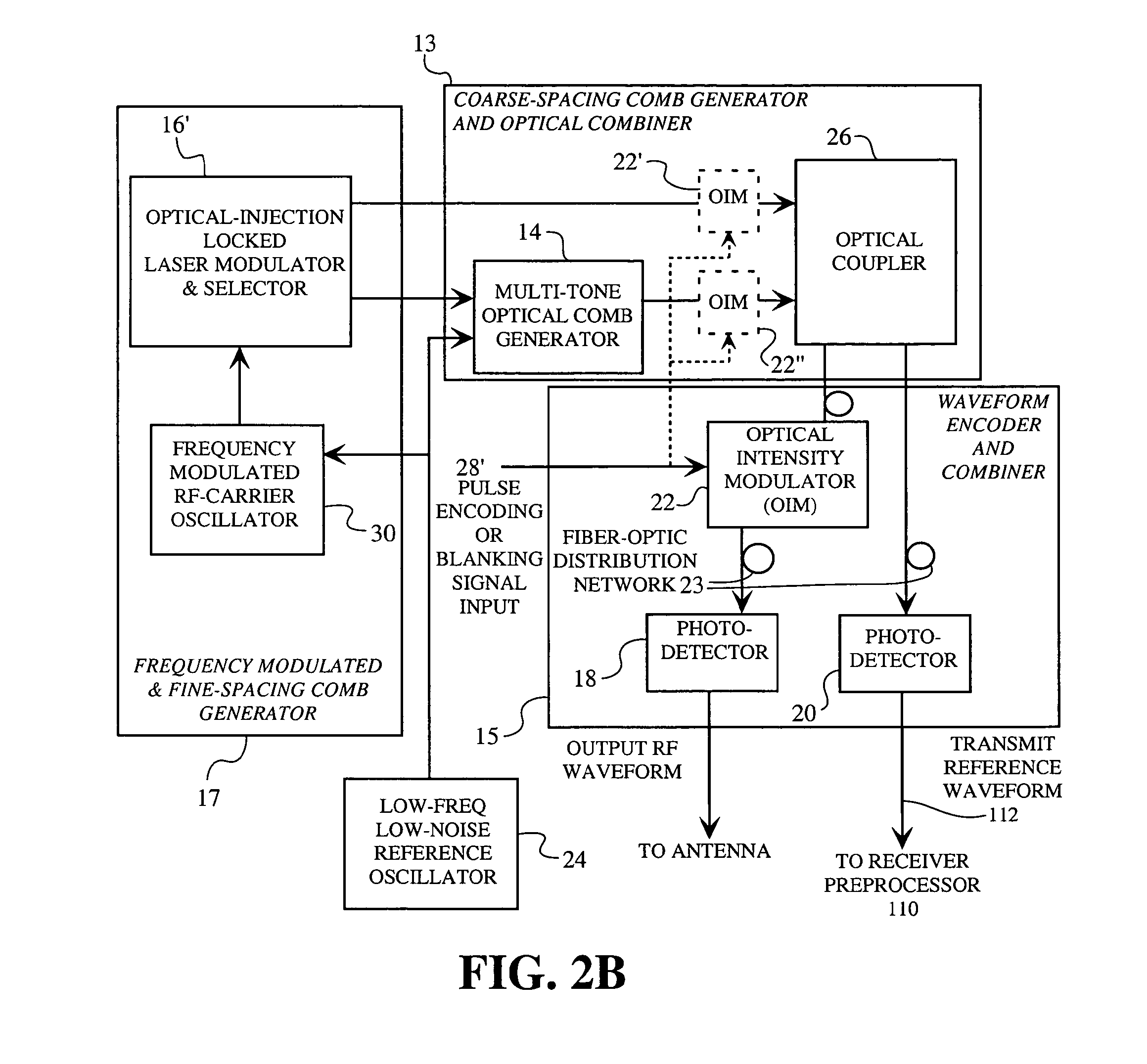Method and apparatus for waveform generation
a waveform generator and radio frequency lightwave technology, applied in multiplex communication, instruments, optics, etc., can solve the problems of noise, difficult for the interceptor to distinguish the signal from the background noise, and difficult for the receiver to detect the signal
- Summary
- Abstract
- Description
- Claims
- Application Information
AI Technical Summary
Benefits of technology
Problems solved by technology
Method used
Image
Examples
Embodiment Construction
[0068]This invention relates to a unique approach in the generation of rapidly frequency hopped or dithered, or frequency modulated multi-tone RF comb lines on a lightwave carrier using coherent optical heterodyning in order to make the signal transmitted on these carriers difficult to detect. The concept of optical heterodyning was briefly discussed above, to provide background information. Two embodiments for generating a frequency translatable comb signal are described with reference to FIGS. 3-6. Then, several embodiments for producing a frequency-hopped waveform are described with reference to FIGS. 7 and 8. Finally, modifications for improved stability and tone uniformity are then discussed (with reference to FIGS. 9-14) according to embodiments for generating the frequency translatable comb signal.
[0069]A block diagram of an agile waveform generator 12 according to an embodiment of the present invention is shown in FIG. 2A. The embodiment depicted in FIG. 2A may be particular...
PUM
| Property | Measurement | Unit |
|---|---|---|
| frequency | aaaaa | aaaaa |
| length | aaaaa | aaaaa |
| frequency | aaaaa | aaaaa |
Abstract
Description
Claims
Application Information
 Login to View More
Login to View More - R&D
- Intellectual Property
- Life Sciences
- Materials
- Tech Scout
- Unparalleled Data Quality
- Higher Quality Content
- 60% Fewer Hallucinations
Browse by: Latest US Patents, China's latest patents, Technical Efficacy Thesaurus, Application Domain, Technology Topic, Popular Technical Reports.
© 2025 PatSnap. All rights reserved.Legal|Privacy policy|Modern Slavery Act Transparency Statement|Sitemap|About US| Contact US: help@patsnap.com



